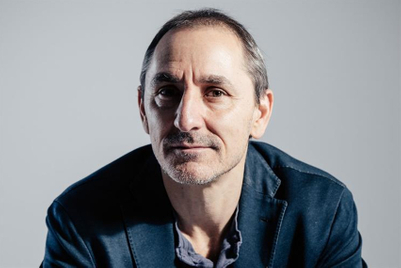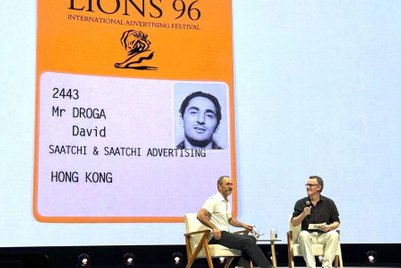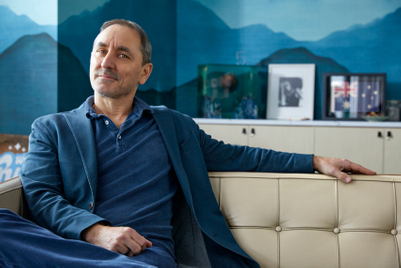Global consulting major Accenture marked its first serious foray into marketing services when it acquired London creative agency Karmarama in 2016. The Karmarama acquisition gave Accenture ostensibly the ability to connect the thinking behind new strategic ideas with the actual implementation of end-to-end customer experiences through elements such as user experience design, customer focused data analytics and customer engagement strategies.
In two years after Karmarama became an Accenture agency, the consultancy outfit employs over 18,000 digital and creative professionals worldwide under its umbrella. Earlier this week, Accenture announced it was buying Droga5, and the New York-based creative hot-shop will become part of Accenture Interactive.
With 500 employees in New York and London, Droga5 will “boost its (Accenture’s) capabilities as an experience agency able to design, build and run customer experiences that grow brands and businesses” the press release stated.
For the record, Accenture formed Accenture Interactive in 2009 after its client CMOs "became more responsible for business goals, not just brand goals”.
Accenture’s acquisition of a visible advertising business is not a new phenomenon. Deloitte Digital made nine marketing services acquisitions in 2017, including that of Market Gravity in the UK, Acne Agency in Sweden, and now features as a key challenger on Gartner’s Magic Quadrant listings for digital marketing agencies. Last year Accenture bought Kolle Rebbe In Germany; Perficient acquired Elixiter; our very own Tata Consultancy Services bought W12 Studios; Capegemini pocketed digital specialist June 21; Bain & Co. wrote a cheque to pick up Minneapolis based digital agency FRWD adding more muscle to its already strong digital consulting practice represented by brands such as Bain Radar 360, Bain Omnichannel Strategy and ADAPT@Bain.
The key question facing us today is whether acquisitions such as the iconic Droga5 spell the end of the advertising business as we know it today, and is it only a matter of time before global consultancies devour the creative business that has so far been the exclusive preserve of ad agencies?
Well my take on this subject is dictated by a bit of caution. Ad agencies and consultancies have always been in the same business: that of helping clients grow; but they used to sell fundamentally different products to do so. At their best, agencies were (and are) single-mindedly focused to deliver great creative work. Consultancies have hitherto largely concentrated more on corporate strategy, including usage of technology. But of late, corporate strategy has meant the sharpening of brand strategy, which in turn has dictated enhanced use of technology and data analytics. Since most ad agencies were not cerebrally oriented towards usage of these new tech-tools and greater use of quantitative thinking in brand-building, consultancies were quick to offer their services in this new domain. But does that mean that the game is over for the ad agency business? Or is it the beginning of the end. Well, any such conclusion would perhaps be termed hasty. Yes, there is a real challenge. But so far it is not life-threatening.
To better explain what I am saying, let me take you to last year when Accenture Interactive helped Subway introduce an initiative called Subway Digital, with the aim of personalising consumer experiences at the sandwich shop. The multiyear scope of the assignment included consumer-facing loyalty programs and the back-end design of Subway's app, which was overhauled to include order and pay functionality. But despite the substantial Accenture involvement in the tech and UI of the app, Accenture's assignment did not include advertising to raise awareness of the new app; Subway kept that work with its lead creative agency, MMB. So, the consultancies have started to encroach and nibble at the brand business, but the core of it, the creative ideation and execution, is still seen to be best handled by specialist ad agencies.
To be fair, consultancies have a huge advantage over ad agencies in the collation, interpretation and application of data being generated by brands and their consumers. Data is today driving a vast majority of marketing services decisions including campaign design, events and customer touch-points, and this is driving a new level of overlap between traditional creative services and technology. With many consultancies pushing for greater usage of data-driven insights to work harder and bring in new revenue streams for the brand, creative service providers (read ad agencies) are naturally disadvantaged. This is therefore a big opportunity for consultancies … hence the endeavour to create (or acquire) a domain expertise that is absent in ad agencies and by providing that expertise, consultancies strengthen the overall relationship with the very same clients, in the process weakening the client-agency bond.
At another level, digital disruption has also resulted in media buying and production, market research, and strategic planning all becoming increasingly automated and commoditized, which has had a significant impact on agency deliverables and pricing models followed by clients. Concurrently, marketing budgets particularly for FMCG companies are shrinking. Equally, media buying networks have been often criticised for their slow reaction time, excessive complexity and the opaqueness surrounding their expenditure for clients. These are not good signs for ad agencies as clients are encouraged to consider and seek alternatives.
In my 35 years in the business, I have seen many changes, many transformations. The 90s saw agencies waking up to integrated communication … a kind of communication-without-lines approach … so clients could have a one-window service across not just creative and media but also market research, direct marketing, public relations, experiential marketing, and more. Some agencies succeeded. Some did not. By the end 90s, the media and creative businesses were split up for better focus, and greater specialisation. I thought that, more than any other change in recent decades, spelt the death-knell of the ad agency. Most advertising practitioners lost interest in the media product, thinking creative was an end in itself. And that is where they erred. They forgot that the medium will always be the message. Divorcing creative thinking and output from its end journey, the media, meant that creative agencies became more insular. This seclusion from the changing reality of customer touch-points was further accentuated by the arrival of digital and mobile. Both these new tech interfaces changed consumer buying behaviour. Agencies struggled to keep up. Data further added to the agency woes. The typical copywriter and art director in the ad agency was always just more comfortable with writing a headline or writing a 30-second commercial. Grudgingly, the baseline became a hash-tagged brand claim but the ‘action’ orientation that brands demand today is something most folks in the agency don’t clearly understand. The consultancies carry no baggage of needing to be ‘creative’, hence are seen to be more nimble, more tech-savvy, more results-driven and more empirical.
The Droga5 sell-out is a pointer to the emergence of a possible new animal: the ‘cagency’ … a combination of a consultancy and an ad agency… a combination of left-brain and right-brain orientations… a coming together of creative plus technology… an organisation that will understand consumer trends and patterns through a better internalisation of data, and use that to create more incisive brand communication for greater brand sales. It is possible. But it will require the management of very different culture types. And that is not easy.
So are the likes of Thompson, Lowe Lintas and Ogilvy threatened? Well, not really. At least not in the near future. What if Accenture or IBM buy some of the creative boutiques around? My belief is that this could create ripples, not unleash a tsunami. The biggies in advertising have still a three to five years window to smarten up their act in technology, data and mobile. The merger of Wundermann and JWT may be a step in that direction but Wundermann still lacks the tech-savvy of an Accenture or an IBM. So they’ve got to try harder, hire better, plan exponential growth in delivery of smart-services rather than get overwhelmed by the incursion currently underway.
For consultancies, acquisition is an easy route to quicker market entry in the marketing and communication space. But becoming ‘creative’ is not easy. the orientation, the skills, the thinking is very different. Wit cannot be taught. As much as humour cannot be tutored. Consultancies are wired differently. For them to ‘buy’ is do-able but to ‘become’ is difficult.
Dr. Sandeep Goyal is an advertising veteran who has built successful businesses in digital and mobile in recent years.










.png&h=268&w=401&q=100&v=20250320&c=1)
.png&h=268&w=401&q=100&v=20250320&c=1)

